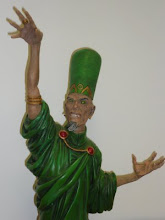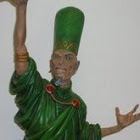
A compelling and engaging crime story with a great cast, brilliantly realised location and a tightly wound plot. Following the death of her mother Laura Sonfeldt decides to investigate the disappearance of her older sister fifteen years previously. In Galloway in Scotland, a remote farming community is hammered by the outbreak of foot and mouth in their sheep and cattle herds as well as the discovery of a skeleton. Detective Marjory Flemming has to investigate the case as well as keep public order in a community splintering under the impact of the mass slaughter of the flocks of animals. The threads of the plot are carefully woven together, the reveals are brilliantly staged, and the climax packs a considerable punch.
The context for the plot is superbly done, an isolated community under savage pressure that is attacking the focus of its identity, a farming community being forced to watch its stock be destroyed. Marjory Flemming, a police officer, a farmer and a farmer's wife is stretched across the fault lines and forced to make damaging choices. She is smart, resilient and dedicated playing a poor hand with force and thoughtfulness. Laura Sonfeldt, trying to recover her bearing in life after the death of her mother develops strongly throughout the story.
There is a glorious supporting cast who are all vying for the readers attention, they are full of life and vigour, none are stereotypes or shortchanged by Aline Templeton. A pleasure.







































